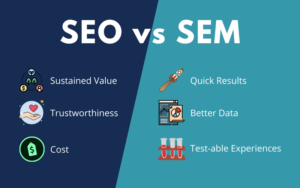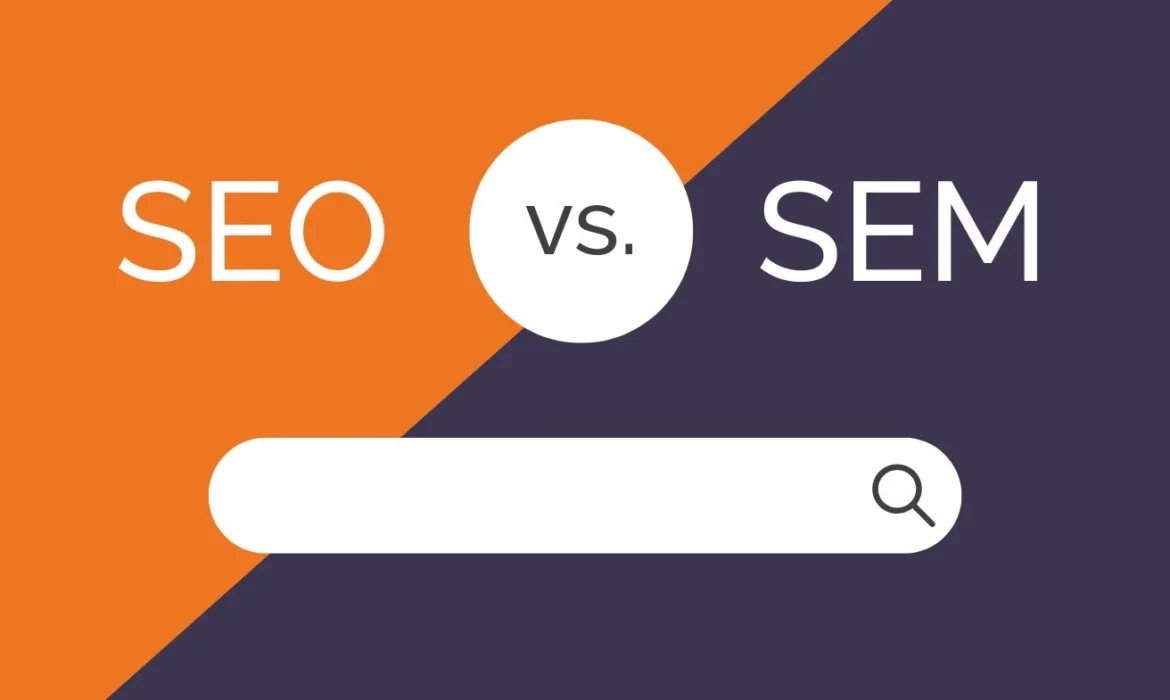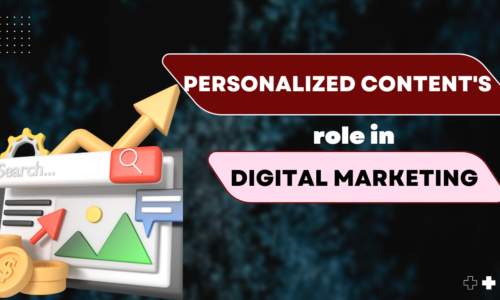In today’s competitive digital landscape, businesses must establish a strong online presence to thrive. Two primary strategies dominate this space: Search Engine Optimization (SEO) and Search Engine Marketing (SEM). Both aim to boost visibility on search engines like Google but differ significantly in approach, cost, and time to deliver results. SEO focuses on organic growth through content and optimization, while SEM leverages paid advertising for instant visibility. Choosing the right strategy depends on your business goals, budget, and timeline.
This blog(SEO vs. SEM: Which Strategy is Right for Your Business?) explores the key differences between SEO and SEM to help you determine the best approach for your business. marketing objectives. Get ready for revenue!
SEO and SEM: A Brief Overview
SEO and SEM share a common goal—driving traffic to your website. SEO emphasizes long-term, sustainable growth by improving organic search rankings. SEM, on the other hand, delivers immediate results through paid ads. Both are valuable, but the right choice depends on factors like your audience, competition, and resources.

1. Understanding SEO: Building Organic Visibility
SEO is a strategy that improves your website’s visibility on search engine results pages (SERPs) without paid ads. It involves optimizing your site’s content, structure, and keywords to align with search engine algorithms.
Benefits of SEO:
- Cost-Effective: Once optimized, organic traffic is essentially free, unlike paid ads.
- Long-Term Results: SEO efforts compound over time, offering sustained visibility.
- Trust and Credibility: High organic rankings foster trust among users.
- Broader Reach: Appealing to users across various stages of the buyer journey.
- Improved User Experience: SEO emphasizes fast, mobile-friendly websites with valuable content.
SEO requires consistent effort but delivers lasting results. It’s ideal for businesses seeking sustainable growth.
SEO vs. SEM: Which Strategy is Right for Your Business?

2. Understanding SEM: Gaining Immediate Visibility
SEM uses paid ads to appear at the top of search engine results for targeted keywords. It’s a quick way to gain visibility, especially for competitive keywords or time-sensitive campaigns.
Advantages of SEM:
- Quick Results: Ads appear instantly, driving traffic immediately after launch.
- Highly Targeted: Ads can be tailored to specific demographics, locations, and user behavior.
- Scalable Campaigns: Budgets and bids can be adjusted in real time to control costs.
- Measurable Performance: Detailed analytics provide insights into ROI, click-through rates, and conversions.
- Competitive Edge: SEM helps businesses compete in saturated markets where organic rankings may take time.
While SEM delivers fast results, it requires continuous investment to maintain visibility.
3. SEO vs. SEM: Which Should You Choose?
Choosing between SEO and SEM depends on your goals and resources. If you need immediate visibility or are running a short-term campaign, SEM is the better option. For businesses focused on building long-term authority and sustainable traffic, SEO is more suitable. Combining both strategies often yields the best results, allowing you to balance quick wins with long-term growth.
SEO is a marathon, not a sprint. SEM is the sprint you run while training for the marathon.
Unknown
Conclusion
Both SEO and SEM play pivotal roles in a comprehensive digital marketing strategy. SEO is an investment in your brand’s long-term visibility and credibility, while SEM offers a fast track to immediate results. The key is understanding your business goals, budget, and timeline. In many cases, a hybrid approach that leverages both strategies provides the greatest advantage. Whether you’re building organic traffic through SEO or running targeted ads with SEM, the ultimate goal remains the same—connecting with your audience and driving business success. Choose wisely, monitor your results, and adapt your strategy to achieve optimal outcomes.
Shop our exclusive digital products
Check our Linkedin Page
Read: Top 10 Digital Marketing Trends



